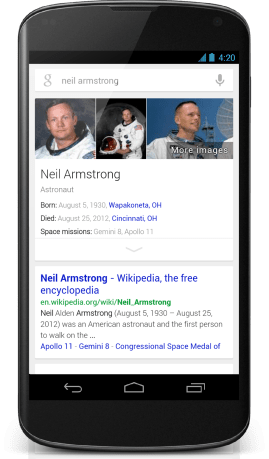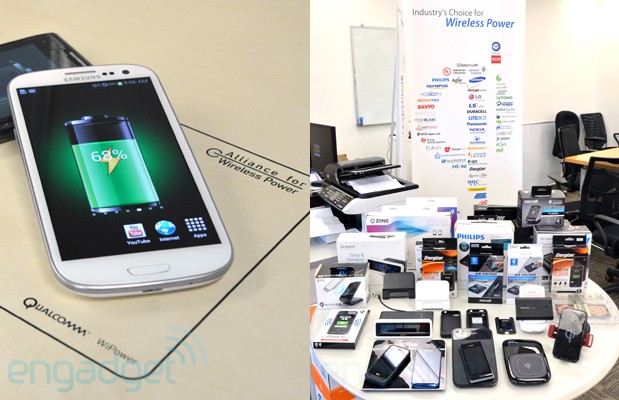
Thursday, October 03. 2013
Somebody Stole 7 Milliseconds From the Federal Reserve
Via Mother Jones
-----
Last Wednesday, the Fed announced that it would not be tapering its bond buying program. This news was released at precisely 2 p.m. in Washington "as measured by the national atomic clock." It takes seven milliseconds for this information to get to Chicago. However, several huge orders that were based on the Fed's decision were placed on Chicago exchanges two to three milliseconds after 2 p.m. How did this happen?
CNBC has the story here, and the answer is: We don't know. Reporters get the Fed release early, but they get it in a secure room and aren't permitted to communicate with the outside world until precisely 2 p.m. Still, maybe someone figured out a way to game the embargo. It would certainly be worth a ton of money. Investigations are ongoing, but Neil Irwin has this to say:
"In the meantime, there's another useful lesson out of the whole episode. It is the reality of how much trading activity, particularly of the ultra-high-frequency variety is really a dead weight loss for society.
…There is a role in [capital] markets for traders whose work is more speculative…But when taken to its logical extremes, such as computers exploiting five millisecond advantages in the transfer of market-moving information, it's much less clear that society gains anything…In the high-frequency trading business, billions of dollars are spent on high-speed lines, programming talent, and advanced computers by funds looking to capitalize on the smallest and most fleeting of mispricings. Those are computing resources and insanely intelligent people who could instead be put to work making the Internet run faster for everyone, or figuring out how to distribute electricity more efficiently, or really anything other than trying to figure out how to trade gold futures on the latest Fed announcement faster than the speed of light."
Yep. I'm not sure what to do about it, though. A tiny transaction tax still seems like a workable solution, although there are several real-world issues with it. Worth a look, though.
In a related vein, let's talk a bit more about this seven millisecond figure. That might very well be how long it takes a signal to travel from Washington, DC, to Chicago via a fiber-optic cable, but in fact the two cities are only 960 kilometers apart. At the speed of light, that's 3.2 milliseconds. A straight line path would be a bit less, perhaps 3 milliseconds. So maybe someone has managed to set up a neutrino communications network that transmits directly through the earth. It couldn't transfer very much information, but if all you needed was a few dozen bits (taper/no taper, interest rates up/down, etc.) it might work a treat. Did anyone happen to notice an extra neutrino flux in the upper Midwest corridor at 2 p.m. last Wednesday? Perhaps Wall Street has now co-opted not just the math geek community, and not just the physics geek community, but the experimental physics geek community. Wouldn't that be great?
World's Largest Solar Thermal Energy Plant Opens in California
Via Inhabitat
-----


Ivanpah is comprised of 300,000 sun-tracking mirrors (heliostats), which surround three, 459-foot towers. The sunlight concentrated from these mirrors heats up water contained within the towers to create super-heated steam which then drives turbines on the site to produce power.
The first successfully operating unit will sell power to California’s Pacific Gas and Electric, as will Unit 3 when it comes online in the coming months. Unit 2 is also set to come online shortly, and will provide power to Southern California Edison.
Construction began on the facility in 2010, and achieved it’s first “flux” in March, a crucial test which proved its readiness to begin commercial operation. Tests this past Tuesday formed Ivanpah’s “first sync” which began feeding power into the grid.
As John Upton at Grist points out, the project is not without its critics, noting that some “have questioned why a solar plant that uses water would be built in the desert — instead of one that uses photovoltaic panels,” while others have been upset by displacement of local wildlife—notably 100 endangered desert tortoises.
But the Ivanpah plant still constitutes a major milestone, both globally as the world’s largest solar thermal energy plant, and locally for the significant contribution it will make towards California’s renewable energy goal of achieving 3,000 MW of solar generating capacity through public utilities and private ownership.
Images © BrightSource Energy
Wednesday, October 02. 2013
UW engineers invent programming language to build synthetic DNA
-----
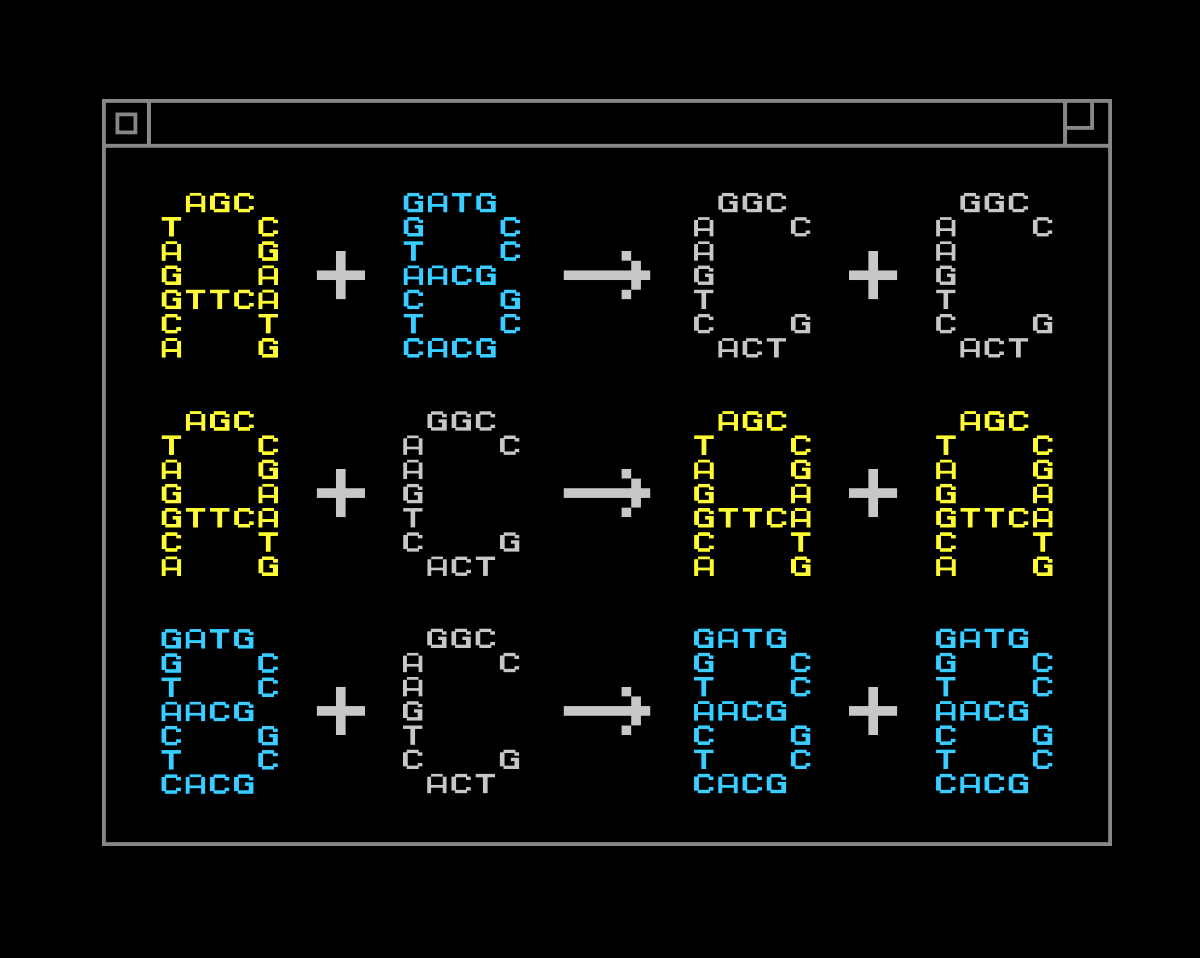
Yan Liang, L2XY2.com
An example of a chemical program. Here, A, B and C are different chemical species.
Similar to using Python or Java to write code for a computer, chemists soon could be able to use a structured set of instructions to “program” how DNA molecules interact in a test tube or cell.
A team led by the University of Washington has developed a programming language for chemistry that it hopes will streamline efforts to design a network that can guide the behavior of chemical-reaction mixtures in the same way that embedded electronic controllers guide cars, robots and other devices. In medicine, such networks could serve as “smart” drug deliverers or disease detectors at the cellular level.
The findings were published online this week (Sept. 29) in Nature Nanotechnology.
Chemists and educators teach and use chemical reaction networks, a century-old language of equations that describes how mixtures of chemicals behave. The UW engineers take this language a step further and use it to write programs that direct the movement of tailor-made molecules.
“We start from an abstract, mathematical description of a chemical system, and then use DNA to build the molecules that realize the desired dynamics,” said corresponding author Georg Seelig, a UW assistant professor of electrical engineering and of computer science and engineering. “The vision is that eventually, you can use this technology to build general-purpose tools.”
Currently, when a biologist or chemist makes a certain type of molecular network, the engineering process is complex, cumbersome and hard to repurpose for building other systems. The UW engineers wanted to create a framework that gives scientists more flexibility. Seelig likens this new approach to programming languages that tell a computer what to do.
“I think this is appealing because it allows you to solve more than one problem,” Seelig said. “If you want a computer to do something else, you just reprogram it. This project is very similar in that we can tell chemistry what to do.”
Humans and other organisms already have complex networks of nano-sized molecules that help to regulate cells and keep the body in check. Scientists now are finding ways to design synthetic systems that behave like biological ones with the hope that synthetic molecules could support the body’s natural functions. To that end, a system is needed to create synthetic DNA molecules that vary according to their specific functions.
The new approach isn’t ready to be applied in the medical field, but future uses could include using this framework to make molecules that self-assemble within cells and serve as “smart” sensors. These could be embedded in a cell, then programmed to detect abnormalities and respond as needed, perhaps by delivering drugs directly to those cells.
Seelig and colleague Eric Klavins, a UW associate professor of electrical engineering, recently received $2 million from the National Science Foundation as part of a national initiative to boost research in molecular programming. The new language will be used to support that larger initiative, Seelig said.
Co-authors of the paper are Yuan-Jyue Chen, a UW doctoral student in electrical engineering; David Soloveichik of the University of California, San Francisco; Niranjan Srinivas at the California Institute of Technology; and Neil Dalchau, Andrew Phillips and Luca Cardelli of Microsoft Research.
The research was funded by the National Science Foundation, the Burroughs Wellcome Fund and the National Centers for Systems Biology.
Scientists want to turn smartphones into earthquake sensors
Via The Verge
-----

For years, scientists have struggled to collect accurate real-time data on earthquakes, but a new article published today in the Bulletin of the Seismological Society of America may have found a better tool for the job, using the same accelerometers found in most modern smartphones. The article finds that the MEMS accelerometers in current smartphones are sensitive enough to detect earthquakes of magnitude five or higher when located near the epicenter. Because the devices are so widely used, scientists speculate future smartphone models could be used to create an "urban seismic network," transmitting real-time geological data to authorities whenever a quake takes place.
The authors pointed to Stanford's Quake-Catcher Network as an inspiration, which connects seismographic equipment to volunteer computers to create a similar network. But using smartphone accelerometers would be cheaper and easier to carry into extreme environments. The sensor will need to become more sensitive before it can be used in the field, but the authors say once technology catches up, a smartphone accelerometer could be the perfect earthquake research tool. As one researcher told The Verge, "right from the start, this technology seemed to have all the requirements for monitoring earthquakes — especially in extreme environments, like volcanoes or underwater sites."
Tuesday, October 01. 2013
Google Street View Comes to Large Hadron Collider at CERN
Via Mashable
-----
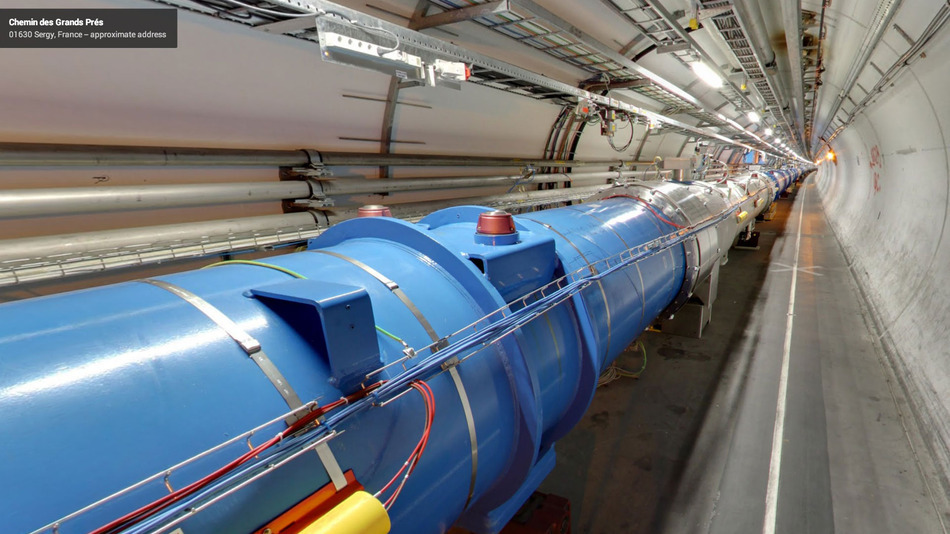
Want to see CERN's Geneva lab, where the Large Hadron Collider (LHC) is installed, from the inside? You're in luck, cause Google has added Street View imagery from inside CERN's facilities to its Google Maps service.
The imagery shows CERN's laboratories, control centers and underground tunnels. Highlights include the Large Hadron Collider, the 7000-ton ATLAS detector, and ALICE, a heavy-ion detector on the LHC ring.
To capture the images, Google's Street View team worked with CERN for two weeks in 2011. Google has been on fire lately when it comes to Street View. A few weeks ago, the service launched a 360-degree tour of Galápagos Islands; two days before that, the Moto X manufacturing facility was added to Street View, and in August, Google added some of the world's best zoos to Street View.
Check out the imagery here and tell us what you think in the comments.
Image: Google
France sanctions Google for European privacy law violations
Via pcworld
-----
Google faces financial sanctions in France after failing to comply with an order to alter how it stores and shares user data to conform to the nation's privacy laws.
The enforcement follows an analysis led by European data protection authorities of a new privacy policy that Google enacted in 2012, France's privacy watchdog, the Commission Nationale de L'Informatique et des Libertes, said Friday on its website.
Google was ordered in June by the CNIL to comply with French data protection laws within three months. But Google had not changed its policies to comply with French laws by a deadline on Friday, because the company said that France's data protection laws did not apply to users of certain Google services in France, the CNIL said.
The company "has not implemented the requested changes," the CNIL said.
As a result, "the chair of the CNIL will now designate a rapporteur for the purpose of initiating a formal procedure for imposing sanctions, according to the provisions laid down in the French data protection law," the watchdog said. Google could be fined a maximum of €150,000 ($202,562), or €300,000 for a second offense, and could in some circumstances be ordered to refrain from processing personal data in certain ways for three months.
What bothers France
The CNIL took issue with several areas of Google's data policies, in particular how the company stores and uses people's data. How Google informs users about data that it processes and obtains consent from users before storing tracking cookies were cited as areas of concern by the CNIL.
In a statement, Google said that its privacy policy respects European law. "We have engaged fully with the CNIL throughout this process, and we'll continue to do so going forward," a spokeswoman said.
Google is also embroiled with European authorities in an antitrust case for allegedly breaking competition rules. The company recently submitted proposals to avoid fines in that case.
Monday, September 30. 2013
The $400 Deltaprintr Is A Cheap Way To Make Really Big 3D Prints
Via TechCrunch
-----

Another day, another 3D printer. This time we have a model that comes from SUNY Purchase College where they are working on a laser-cut, compact 3D printer that can make extra tall models simply by swapping out a few pieces.
The printer pumps out plastic at 100 microns, a more than acceptable resolution, and uses very few moving parts. You’ll notice that the print head rides up three rails. This would allow you to add longer bars or extensions to bring things bigger than the platform.
Created by students Shai Schechter, Andrey Kovalev, Yasick Nemenov and Eugene Sokolov, the project is currently in pre-beta and they aim to launch a crowdfunding campaign in November. You can sign up for updates here.
The team hopes to make the product completely open source and because it uses very few expensive parts they’re able to price it very aggressively. While I love projects like these, I’m anxious to see how they build their software – one of the most important parts of a 3D printing package. As long as it’s solid I’d totally be down with this cool rig.
Saturday, September 28. 2013
Google Improves Knowledge Graph With Comparisons And Filters, Brings Cards & Cross-Platform Notifications To Mobile
Via TechCrunch
-----
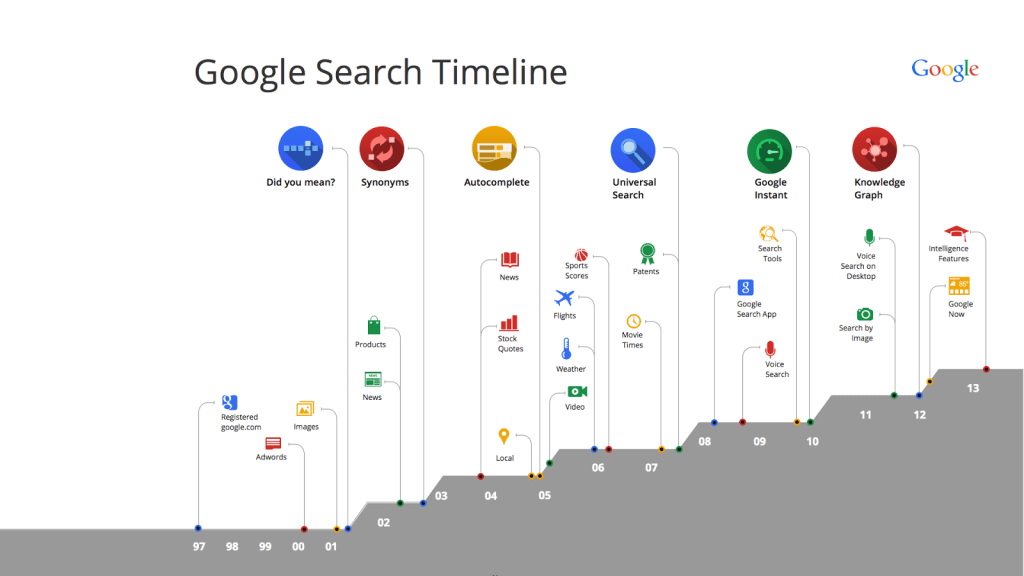
Google is turning 15 tomorrow and, fittingly, it’s celebrating the occasion by announcing a couple of new features for Google Search. The mobile search interface, for example, is about to get a bit of a redesign with results that are clustered on cards “so you can focus on the answers you’re looking for.”
Those answers, Google today announced, are also getting better. Thanks to its Knowledge Graph, the company continues to push to give users answers instead of just links, and with today’s update, it’s now featuring the ability to use the Knowledge Graph to compare things. If you want to compare the nutritional value of olive oil to butter, for example, Google Search will now give you a comparison chart with lots of details. The same holds true for other things, including dog breed and celestial objects. Google says it plans to expand this feature to more things over time.
Also new in this update is the ability to use Knowledge Graph to filter results. Say you ask Google: “Tell me about Impressionist artists.” Now, you’ll see who these artists are, and a new bar on top of the results will allow you dive in to learn more about them and to switch to learn more about abstract art, for example.
On mobile, Google is now making it easier to use your voice to set reminders and have those synced between devices. So you can say “Ok Google, Remind me to buy butter at Safeway” on your Nexus tablet and when you walk into the store with your iPhone, you’ll get that reminder. To enable this, Google will roll out a new version of its Search app for iPhone and iPad in the next few weeks.
With regard to notifications, it’s also worth noting that Google is now adding Google Now push notifications to its iPhone app, which will finally make Google Now useful on Apple’s platform.
Monday, September 23. 2013
Qualcomm joins Wireless Power Consortium board, sparks hope for A4WP and Qi unification
Via endgadget
-----
Qualcomm, the founding member of Alliance for Wireless Power (or A4WP in short), made a surprise move today by joining the management board of the rival Wireless Power Consortium (or WPC), the group behind the already commercially available Qi standard. This is quite an interesting development considering how both alliances have been openly critical of each other, and yet now there's a chance of seeing just one standard getting the best of both worlds. That is, of course, dependent on Qualcomm's real intentions behind joining the WPC.
While Qi is now a well-established ecosystem backed by 172 companies, its current "first-gen" inductive charging method is somewhat sensitive to the alignment of the devices on the charging mats (though there has been recent breakthrough). Another issue is Qi can currently provide just up to 5W of power (which is dependent on both the quality of the coil and the operating frequency), and this may not be sufficient for charging up large devices at a reasonable pace. For instance, even with the 10W USB adapter, the iPad takes hours to fully juice up, let alone with just half of that power.
Looking ahead, both the WPC and the 63-strong A4WP are already working on their own magnetic resonance implementations to enable longer range charging. Additionally, A4WP's standard has also been approved for up to 24W of output, whereas the WPC is already developing medium power (from 15W) Qi specification for the likes of laptops and power tools.
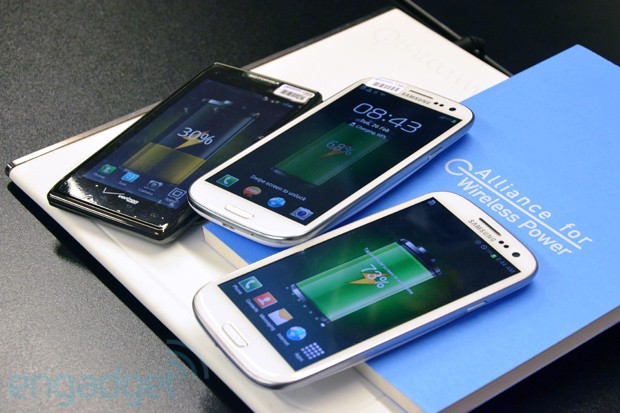
Here's where the two standards differentiate. A4WP's implementation allows simultaneous charging of devices that require different power requirement on the same pad, thus offering more spacial freedom. On the other hand, Qi follows a one-to-one control design to maximize efficiency -- as in the power transfer is totally dependent on how much juice the device needs, and it can even go completely off once the device is charged.
What remains unclear is whether Qualcomm has other motives behind its participation in the WPC's board of management. While the WPC folks "encourage competitors to join" for the sake of "open development of Qi," this could also hamper the development of their new standard. Late last year, we spoke to the WPC's co-chair Camille Tang (the name "Qi" was actually her idea; plus she's also the president and co-founder of Hong Kong-based Convenient Power), and she expressed concern over the potential disruption from the new wireless power groups.
"The question to ask is: why are all these groups now coming out and saying they're doing a standard? It's possible that some people might say they really are a standard, but they may actually not intend to put products out there," said Tang.
"For example, there's one company with their technology and one thing that's rolling out in infrastructure. They don't have any devices, it's not compatible with anything else, so you think: why do they do that?
"It's about money. Not just licensing money, but other types of money as well."
At least on the surface, Qualcomm is showing its keen side to get things going for everyone's best interest. In a statement we received from a spokesperson earlier, the company implied that joining the WPC's board is "the logical step to grow the wireless power industry beyond the current first generation products and towards next generation, loosely coupled technology." However, Qualcomm still "believes the A4WP represents the most mature and best implementation of resonant charging."
Saturday, September 21. 2013
Hackers are crowd-funding a bounty to hack the iPhone 5S fingerprint scanner
Via o.canada.com
-----

The 5S features a fingerprint sensor, has an upgraded camera, and contains an A7 chip Photo: Justin Sullivan/Getty Images
Hackers from around the world have put together more than $15,000 they hope will be enough to entice the smartest hackers to break into the new iPhone’s much-lauded fingerprint scanner.
The iPhone 5S, which was announced last week, features a fingerprint scanner to unlock the device and make purchases. Apple has said that an image of the fingerprint is not stored on the device, but only the data to recognize the fingerprint when it is pressed on the sensor.
Security experts quickly grew suspicious after the product was annouced, though. It is, after all, far easier to change a compromised password than a compromised fingerprint if the data were to get into the wrong hands.
To test Apple’s security claims, hackers are taking the challenge global.
The campaign is being run through IsTouchIdHackedYet.com, where individuals can put up their own money to reward the winner of the challenge.
The amount currently being offered is in excess of $15,000.
To win the prize, someone must be able to demonstrate that they:
- Can lift a fingerprint from the iPhone 5S
- Reproduces the fingerprint
- Use the reproduced fingerprint to unlock the iPhone 5S in fewer than 5 attempts
It’s no small challenge.
Apple says the information gathered by the phone is not an image of the fingerprint but an encrypted pile of data points that describe the fingerprint. They’ve also said that the information is stored deep within the phone and will be extremely difficult for anyone, including Apple, to access. They’ve also said that the fingerprint data will not be transmitted from the phone in any capacity.
This effectively means that winners of the prize will most likely try to dust the phone itself for fingerprints and try to replicate the finger by creating some kind of physical caste of the print to be used on the scanner.
The bounty is described in greater detail here.
If they succeed, it will be an enormous black eye for Apple, which is very proud of the security of its products.
If the hackers fail, it will be a feather in Apple’s cap that their flagship mobile device could not be foiled.
En-guard.
Quicksearch
Popular Entries
- The great Ars Android interface shootout (130694)
- Norton cyber crime study offers striking revenue loss statistics (100954)
- MeCam $49 flying camera concept follows you around, streams video to your phone (99704)
- Norton cyber crime study offers striking revenue loss statistics (57183)
- The PC inside your phone: A guide to the system-on-a-chip (56994)
Categories
Show tagged entries
Syndicate This Blog
Calendar
|
|
December '25 | |||||
| Mon | Tue | Wed | Thu | Fri | Sat | Sun |
| 1 | 2 | 3 | 4 | 5 | 6 | 7 |
| 8 | 9 | 10 | 11 | 12 | 13 | 14 |
| 15 | 16 | 17 | 18 | 19 | 20 | 21 |
| 22 | 23 | 24 | 25 | 26 | 27 | 28 |
| 29 | 30 | 31 | ||||

